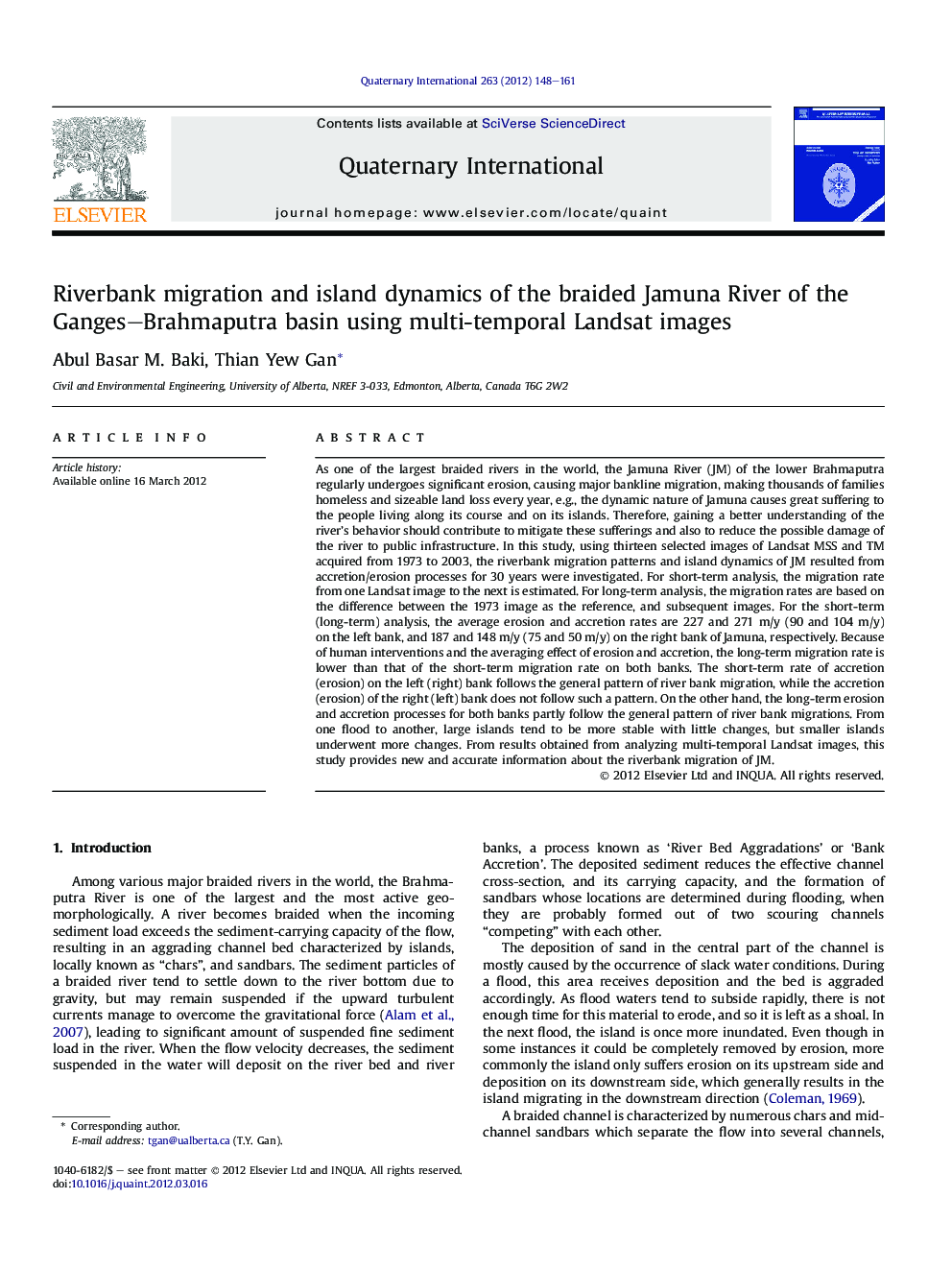| کد مقاله | کد نشریه | سال انتشار | مقاله انگلیسی | نسخه تمام متن |
|---|---|---|---|---|
| 1042872 | 1484222 | 2012 | 14 صفحه PDF | دانلود رایگان |

As one of the largest braided rivers in the world, the Jamuna River (JM) of the lower Brahmaputra regularly undergoes significant erosion, causing major bankline migration, making thousands of families homeless and sizeable land loss every year, e.g., the dynamic nature of Jamuna causes great suffering to the people living along its course and on its islands. Therefore, gaining a better understanding of the river's behavior should contribute to mitigate these sufferings and also to reduce the possible damage of the river to public infrastructure. In this study, using thirteen selected images of Landsat MSS and TM acquired from 1973 to 2003, the riverbank migration patterns and island dynamics of JM resulted from accretion/erosion processes for 30 years were investigated. For short-term analysis, the migration rate from one Landsat image to the next is estimated. For long-term analysis, the migration rates are based on the difference between the 1973 image as the reference, and subsequent images. For the short-term (long-term) analysis, the average erosion and accretion rates are 227 and 271 m/y (90 and 104 m/y) on the left bank, and 187 and 148 m/y (75 and 50 m/y) on the right bank of Jamuna, respectively. Because of human interventions and the averaging effect of erosion and accretion, the long-term migration rate is lower than that of the short-term migration rate on both banks. The short-term rate of accretion (erosion) on the left (right) bank follows the general pattern of river bank migration, while the accretion (erosion) of the right (left) bank does not follow such a pattern. On the other hand, the long-term erosion and accretion processes for both banks partly follow the general pattern of river bank migrations. From one flood to another, large islands tend to be more stable with little changes, but smaller islands underwent more changes. From results obtained from analyzing multi-temporal Landsat images, this study provides new and accurate information about the riverbank migration of JM.
Journal: Quaternary International - Volume 263, 14 June 2012, Pages 148–161